
Roots
There is a quiet, persistent whisper that echoes through time, a subtle knowing about the strands that crown us. It is a knowing that transcends fleeting trends and the glossy allure of contemporary promises. This whisper speaks of hair, not merely as a physical attribute, but as a living legacy, deeply intertwined with identity, history, and well-being.
For those with textured hair, this connection runs particularly deep, a lineage written in every coil and curl. Understanding the fundamental nature of these unique strands, their historical care, and the very language we use to describe them, unlocks a profound appreciation for their inherent beauty and resilience.

The Unique Blueprint of Textured Hair
The physical characteristics of textured hair differ significantly from straighter hair types. At a microscopic level, the hair shaft of textured strands often possesses an elliptical or flat shape, a distinct departure from the more circular cross-section seen in straight hair. This unique geometry encourages the hair to grow in a curvilinear, coiling pattern. This coiling creates points of weakness along the strand, making textured hair inherently more susceptible to breakage than its straighter counterparts.
Its natural bends also mean that the cuticle, the protective outer layer of the hair, is often more open, allowing moisture to escape more readily. This predisposition to dryness makes diligent moisture retention a cornerstone of healthy textured hair care.
This distinct structure is not a flaw; rather, it is a marvel of biological adaptation. Evolutionary biologists suggest that tightly coiled hair may have served as a natural protection against intense ultraviolet radiation for early human ancestors, while also allowing air circulation to the scalp. Such a design speaks to a deep, inherent strength, even amidst its delicate nature.
Textured hair, with its unique elliptical shaft and coiling pattern, presents a distinct biological blueprint that informs its care.
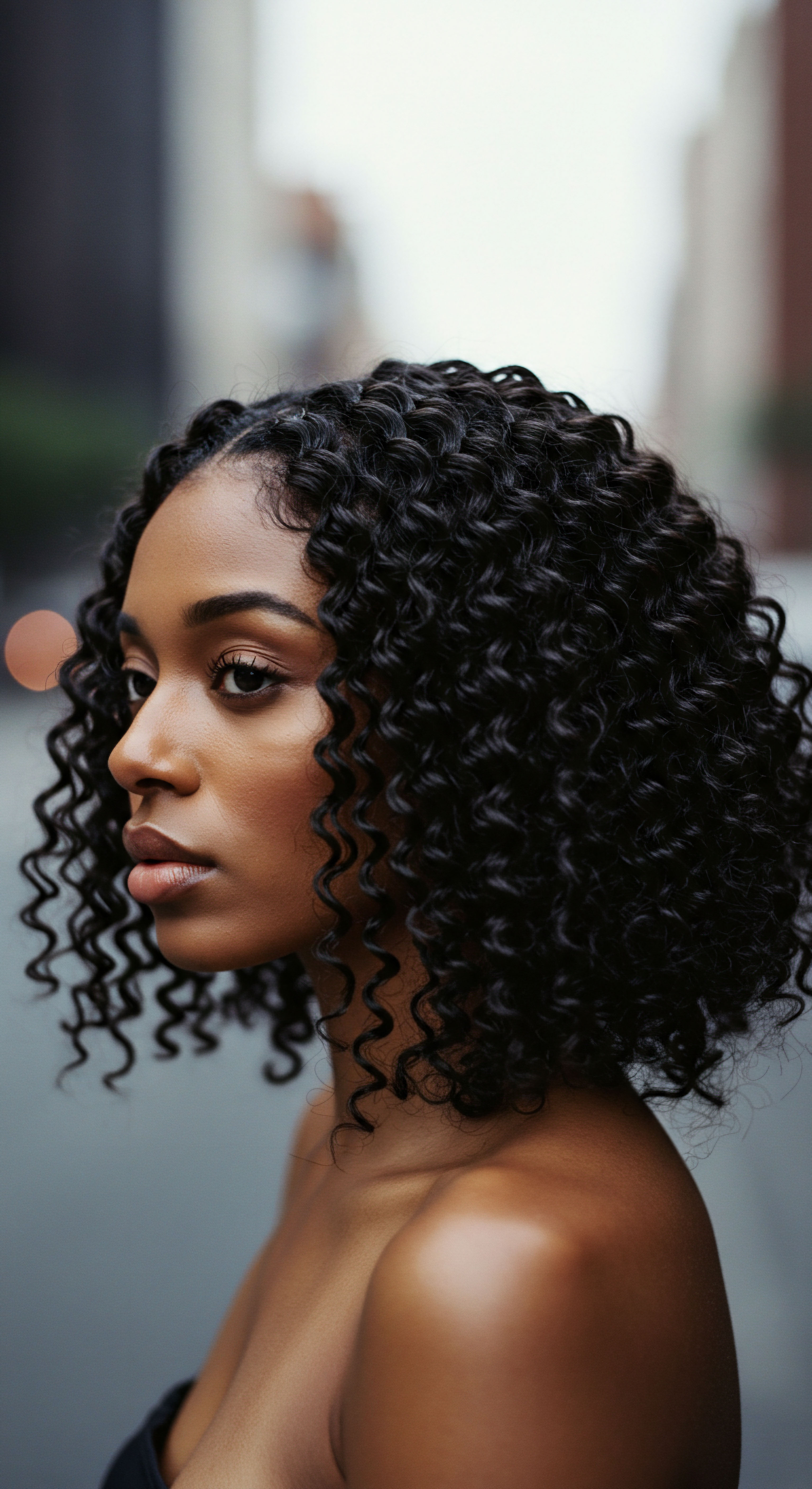
Unraveling Hair Anatomy and Physiology
To truly care for textured hair, one must look beyond the surface. The hair follicle, nestled beneath the skin, is the factory of each strand. It dictates the shape of the hair as it emerges.
The sebaceous glands, adjacent to the follicle, produce sebum, a natural oil that lubricates the scalp and hair. For textured hair, this sebum often struggles to travel down the coiling strands, leaving the ends particularly vulnerable to dryness.
Understanding the three main layers of the hair shaft is also helpful ❉
- Cuticle ❉ The outermost layer, composed of overlapping scales that protect the inner cortex. In textured hair, these scales can be naturally lifted, contributing to moisture loss.
- Cortex ❉ The middle layer, providing strength and elasticity, containing melanin, which determines hair color.
- Medulla ❉ The innermost layer, often absent in finer hair, but present in many textured strands.
The intricate interplay of these components shapes the hair’s overall health and appearance.

Echoes of Ancient Wisdom
Long before modern laboratories formulated complex serums, ancient civilizations understood the profound connection between nature and hair vitality. Across continents, people nurtured their strands with ingredients harvested directly from their surroundings, their practices rooted in observation and reverence for the natural world. These historical practices were not merely about aesthetics; they were holistic approaches to well-being, where hair care was often intertwined with spiritual rituals, social bonding, and medicinal knowledge.
In ancient Egypt, for instance, castor oil was a fundamental element in hair care routines, prized for its conditioning and strengthening properties. Egyptians also blended it with honey and herbs to create masks that promoted growth and shine. Queen Cleopatra herself is said to have relied on olive oil for her lustrous hair.
The Greeks, too, used olive oil, often infused with rosemary and lavender, massaging it into the scalp to nourish from root to tip. These traditions underscore a simple yet potent truth ❉ nature holds many answers for hair health.

Global Hair Care Traditions
The tapestry of historical hair care is rich and varied, with each culture contributing unique insights.
| Ingredient Coconut Oil |
| Historical Origin Ancient India (Ayurveda), Tropical regions |
| Traditional Use Deep moisturization, protein loss prevention, hair health. |
| Modern Scientific Recognition High lauric acid content penetrates hair shaft, reducing protein loss. |
| Ingredient Amla (Indian Gooseberry) |
| Historical Origin Ayurvedic tradition, India |
| Traditional Use Nourishing scalp, strengthening hair, preventing premature graying. |
| Modern Scientific Recognition Rich in Vitamin C, antioxidants; strengthens follicles, hydrates cuticles. |
| Ingredient Shea Butter |
| Historical Origin West African tribes |
| Traditional Use Moisturizing, protecting hair from harsh environmental conditions. |
| Modern Scientific Recognition Emollient properties, provides moisture and seals hair. |
| Ingredient Jojoba Oil |
| Historical Origin Native American tribes |
| Traditional Use Moisturizing properties, balancing scalp oils. |
| Modern Scientific Recognition Resembles natural scalp sebum, excellent conditioner. |
| Ingredient Rosemary |
| Historical Origin Medieval Europe, Native American traditions |
| Traditional Use Aromatic qualities, cleansing, stimulating blood circulation, promoting growth. |
| Modern Scientific Recognition Stimulates circulation, reduces thinning. |
| Ingredient Many ancient ingredients offer proven benefits that align with contemporary hair science. |
In India, the ancient system of Ayurveda held hair care as a holistic practice. Texts thousands of years old describe the use of natural ingredients like amla, shikakai, and neem for cleansing and nourishment. Regular oil massages, known as “champi,” with oils such as coconut and almond, promoted blood circulation and reduced dryness. These practices were deeply integrated into daily life, aiming for balance and overall well-being, reflecting a perspective where hair health was a mirror of internal harmony.
Indigenous tribes across the Americas also relied on nature’s bounty. Yucca root served as a natural shampoo, producing a soapy lather for cleansing. Aloe vera provided moisturizing properties, while herbs like sage and cedarwood oil offered specific benefits.
The Aboriginal people of Australia used emu and kangaroo fat oils, infused with eucalyptus leaves and tea tree, for protection and scalp health, demonstrating a deep respect for the land and its offerings. These traditions highlight a fundamental truth ❉ hair care was often a communal activity, passed down through generations, strengthening cultural ties.

Ritual
Stepping from the quiet wisdom of foundational understanding, we arrive at the practical cadence of daily life. The question of how historical styling practices might inform modern textured hair care strategies finds a resonant answer within the realm of ritual. It is in the gentle, repetitive actions, the intentional choices, and the understanding of purpose behind each movement that we discover a pathway to truly honoring our hair. This section delves into the techniques and tools that have shaped textured hair across generations, revealing how ancient wisdom can become a guiding light for our contemporary care regimens.

Protective Styling Beyond Aesthetics
Protective styling, a cornerstone of textured hair care today, has roots stretching back thousands of years. For pre-colonial African societies, styles like braids, twists, and locs were not merely decorative. They served as vital protective measures against environmental elements, such as sun and wind, preserving the hair’s delicate moisture balance.
More profoundly, these styles were powerful forms of communication, conveying a person’s age, marital status, tribal affiliation, social standing, and even religious beliefs. Braiding, in particular, was often a communal activity, fostering social bonds and passing down cultural knowledge.
The historical significance of these styles extends to moments of profound resistance. During the transatlantic slave trade, when enslaved Africans were stripped of their identities, braiding became a covert means of communication, with patterns serving as maps to freedom or indicating tribal origins. This rich heritage transforms protective styles from simple fashion choices into acts of cultural continuity and self-preservation.
Protective styles, deeply rooted in history, offered more than adornment; they were vital for hair health, cultural expression, and even covert communication.
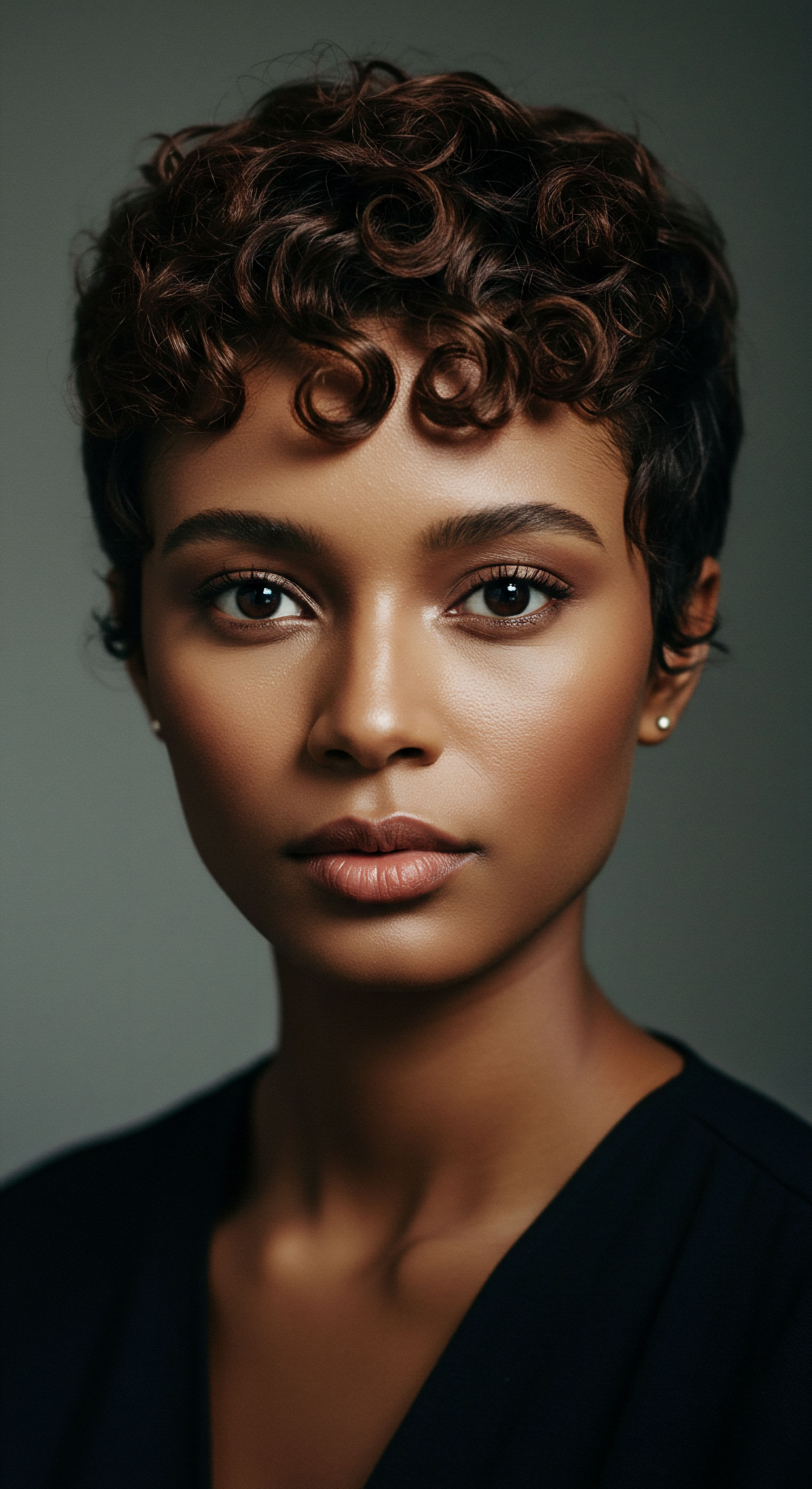
Can Ancient Braiding Techniques Prevent Modern Hair Breakage?
The answer is a resounding yes. Many contemporary protective styles directly echo these ancient practices. Cornrows, box braids, twists, and buns, while adapted for modern sensibilities, retain their core function of tucking away fragile ends, minimizing manipulation, and allowing the hair to rest. This reduces friction, tangling, and exposure to daily wear and tear, which are common culprits of breakage in textured hair.
Consider the principle of low manipulation. Historical styles often involved setting the hair for extended periods, reducing the need for daily combing or styling. This is a direct parallel to modern recommendations for protective styles, which can be worn for days or weeks, allowing the hair to thrive undisturbed. The shift from constant styling to mindful protection is a lesson directly from our ancestors.
Here are some protective styling considerations inspired by historical practices ❉
- Mindful Sectioning ❉ Historically, hair was carefully divided into sections for braiding, ensuring even tension. Modern practice benefits from this to avoid strain on the scalp.
- Gentle Tension ❉ Ancient styles prioritized comfort and longevity, suggesting a lighter hand in styling to prevent tension-induced hair loss.
- Material Choices ❉ Historically, natural fibers or hair itself were used. Today, opting for silk or satin scarves and pillowcases, reminiscent of traditional head coverings, protects hair from friction.
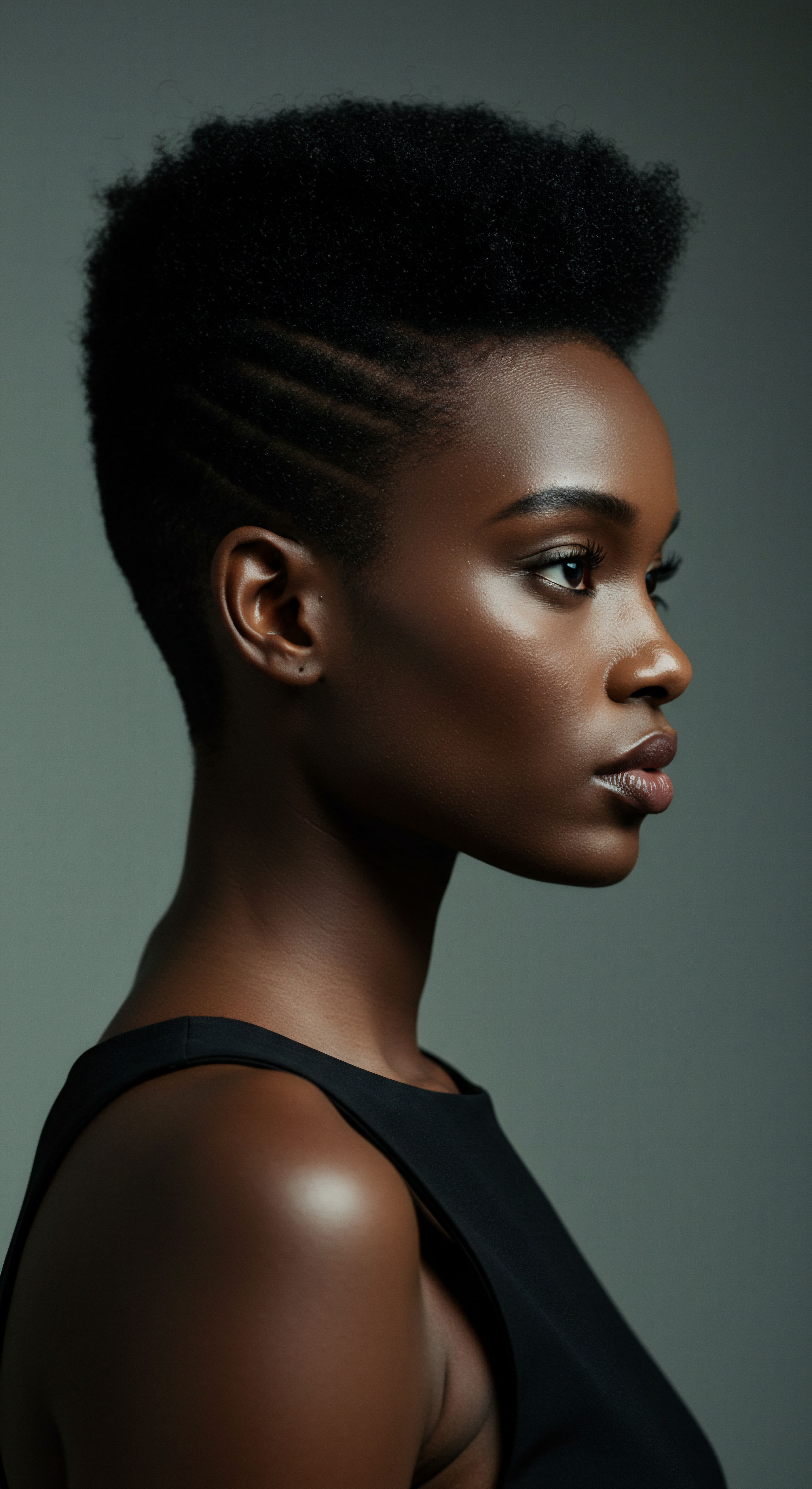
The Wisdom of Traditional Tools and Preparations
The tools and preparations used in historical hair care were, by necessity, derived from nature. Combs were crafted from bone or wood, designed to gently navigate textured strands. Cleansing agents came from plant extracts, clays, and herbs, offering mild purification without stripping natural oils. The emphasis was on nourishment and preservation, a stark contrast to the aggressive chemical and heat-based methods that gained prominence in later centuries.
The introduction of the metal hot comb in the late 1800s and chemical relaxers in the early 1900s marked a significant departure. These tools, while offering the allure of straightened hair, often came at the cost of hair health, leading to breakage and damage. This period highlights a crucial lesson ❉ convenience and conformity, when pursued without a deep understanding of textured hair’s unique needs, can compromise its integrity.

Reclaiming the Scalp’s Vitality
A recurring theme across historical hair care traditions is the profound importance placed on scalp health. Ancient Ayurvedic practices, for instance, considered regular oil massages (“champi”) with nourishing oils like coconut and almond to be essential for stimulating blood circulation, reducing dryness, and promoting hair growth. Indigenous communities also prioritized scalp care through gentle massages and herbal treatments, recognizing the scalp as the foundation for vibrant hair.
This historical emphasis on the scalp offers a clear directive for modern textured hair care. A healthy scalp environment is paramount for hair growth and overall strand vitality. Contemporary strategies can draw from this by ❉
- Regular Scalp Massages ❉ Using fingertips or a scalp massager to stimulate blood flow and distribute natural oils.
- Targeted Scalp Treatments ❉ Applying oils (like rosemary, peppermint, or jojoba) or herbal rinses to address specific concerns such as dryness, flaking, or irritation.
- Gentle Cleansing ❉ Opting for sulfate-free shampoos or co-washing to cleanse the scalp without stripping its protective oils.
The wisdom of nurturing the scalp as a garden for hair growth remains a timeless principle.
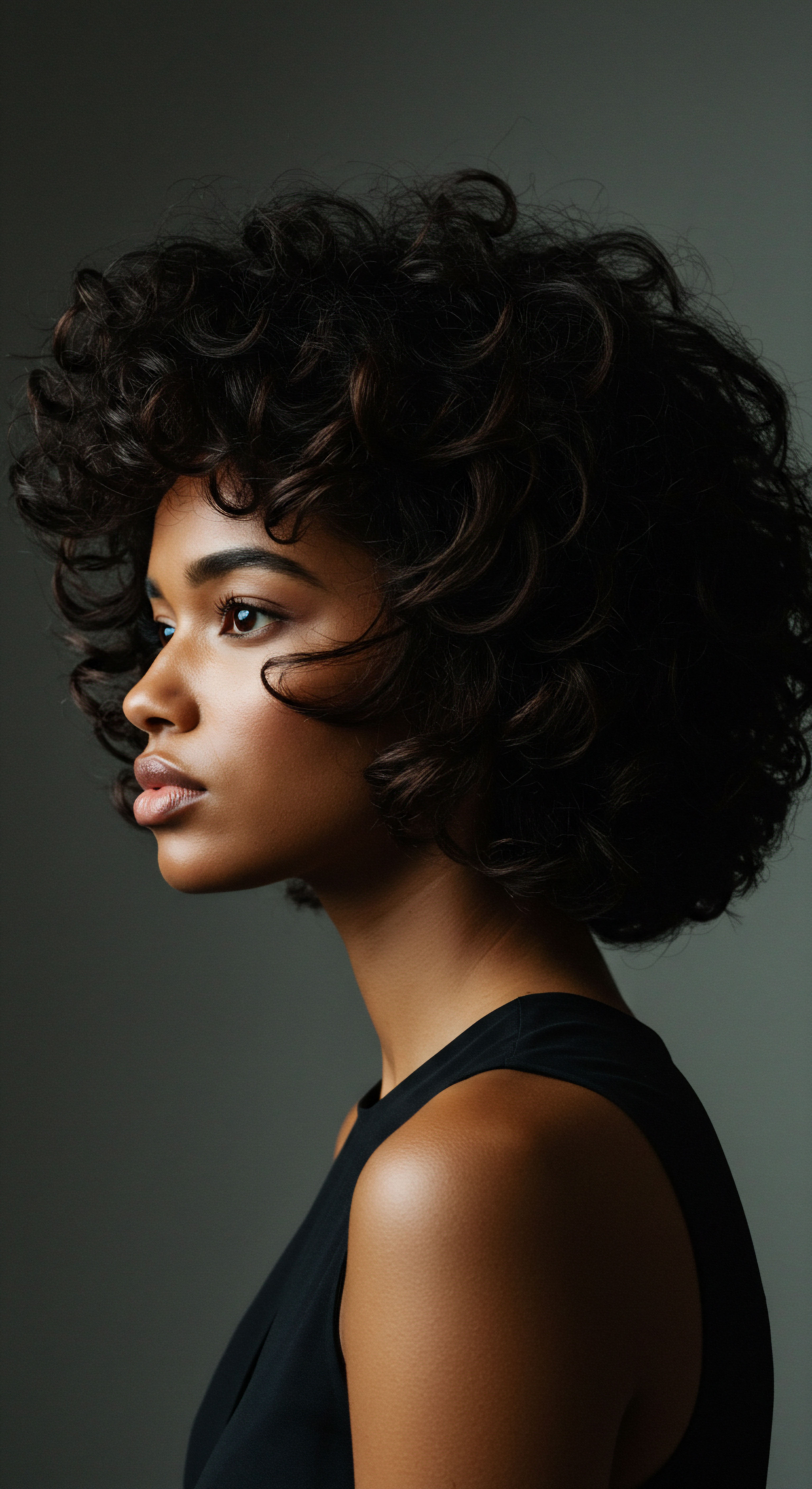
Relay
From the fundamental elements of hair structure and the practical rhythms of care, we now journey into a deeper exploration, one that recognizes the intricate dance between historical practices, scientific insight, and the enduring spirit of textured hair. This section considers how the past not only offers valuable lessons but also shapes the very lens through which we view and approach modern textured hair care strategies, revealing complexities that transcend simple technique.

How Did Historical Hair Perceptions Shape Modern Beauty Standards?
The historical journey of textured hair is marked by periods of both profound celebration and profound suppression. In pre-colonial Africa, hair was a revered aspect of identity, symbolizing social status, marital standing, and even tribal affiliation. Hairstyles were elaborate, meaningful, and integral to communal life. However, with the advent of colonialism and slavery, a deliberate campaign of dehumanization often began with the shaving of hair, severing ties to culture and homeland.
This subjugation extended to the systematic devaluing of natural textured hair, creating a pervasive preference for Eurocentric hair traits. This societal pressure led to the widespread adoption of straightening methods, first with hot combs and later with chemical relaxers. The social acceptance often afforded to those with straighter hair, even in the post-apartheid era, highlights a deeply ingrained legacy of this historical bias.
The historical devaluation of textured hair, particularly during colonial periods, significantly shaped subsequent beauty standards, leading to a complex relationship with natural styles.

The Pencil Test and Its Enduring Legacy
A stark illustration of this historical bias is the “pencil test,” used in apartheid South Africa. This discriminatory practice involved inserting a pencil into a person’s hair to determine their proximity to whiteness. If the pencil held, indicating tightly coiled hair, it often meant a lower social status and restricted access to privileges. This seemingly simple act underscores the profound ways in which hair texture was weaponized as a tool of racial classification and oppression.
This historical context helps us understand why the natural hair movement, which gained significant momentum in the 1960s and 70s during the Civil Rights movement and saw a resurgence in the 21st century, is far more than a trend. It is a powerful act of reclaiming identity, self-acceptance, and resistance against persistent Eurocentric beauty norms. Women choosing to wear their hair in its natural state are not merely styling; they are asserting autonomy and celebrating a heritage that was historically suppressed.

Bridging Ancient Wisdom with Modern Science
The efficacy of many historical hair care practices is increasingly supported by contemporary scientific understanding. The traditional use of various oils, for example, is now validated by research. Coconut oil’s high lauric acid content allows it to penetrate the hair shaft, reducing protein loss. Amla oil, rich in Vitamin C and antioxidants, strengthens hair follicles.
Castor oil, with its ricinoleic acid, stimulates blood circulation to the scalp, promoting growth. This scientific corroboration strengthens the argument for integrating these time-tested ingredients into modern regimens.
Similarly, the historical emphasis on protective styling finds modern scientific backing in preventing conditions like traction alopecia. This form of hair loss, common in Black women, is often linked to excessive tension from tight styles. Historical protective styles, when applied with appropriate tension, minimized manipulation and strain, thereby safeguarding hair integrity. Modern textured hair care strategies can benefit from this understanding by prioritizing low-tension styles and advocating for proper technique in braiding and weaving.

Can Modern Science Enhance Traditional Hair Care Outcomes?
Indeed, modern science can complement and enhance traditional practices, offering new dimensions of care. While historical methods provided foundational nourishment, contemporary research has deepened our understanding of hair biology and the specific needs of textured hair. For instance, advanced cosmetic chemistry can formulate products that deliver precise concentrations of beneficial ingredients, or create formulations that better penetrate the hair shaft, leveraging the insights gleaned from ancient botanical uses.
The advent of non-invasive and minimally invasive hair restoration techniques, such as microneedling and Platelet-Rich Plasma (PRP) therapy, represents a significant scientific advancement in addressing hair loss. These methods stimulate hair follicles and promote growth factors, offering solutions for conditions that traditional practices might not fully address. However, the most effective approach often involves a synergy ❉ combining the holistic, nurturing principles of historical care with the targeted, evidence-based interventions of modern science.
Consider the evolution of hair tools. While hot irons and chemical relaxers historically caused damage, modern advancements in heat styling tools allow for better temperature regulation and reduced damage when used cautiously. The key lies in understanding the science behind the tools and using them in a way that respects the delicate nature of textured hair, a lesson that can be drawn from the historical pitfalls of over-processing.
| Era/Culture Pre-Colonial Africa |
| Hair Perception/Role Symbol of identity, status, spirituality, communication. |
| Impact on Styling/Care Intricate, culturally significant protective styles; communal care. |
| Era/Culture Colonialism/Slavery |
| Hair Perception/Role Dehumanized, associated with inferiority. |
| Impact on Styling/Care Forced shaving, pressure to straighten hair for assimilation. |
| Era/Culture Apartheid South Africa |
| Hair Perception/Role Used as a racial classification tool (e.g. pencil test). |
| Impact on Styling/Care Continued societal pressure for straighter hair for social mobility. |
| Era/Culture Civil Rights/Natural Hair Movements |
| Hair Perception/Role Reclaimed as a symbol of pride, resistance, self-acceptance. |
| Impact on Styling/Care Embracing natural texture, decline in chemical relaxer use. |
| Era/Culture Hair's societal meaning has profoundly shaped care practices and beauty ideals. |

Reflection
The journey through historical styling practices and their influence on modern textured hair care strategies reveals a narrative far richer than mere trends or techniques. It speaks to the enduring wisdom held within ancestral customs, a gentle reminder that true care extends beyond product application to encompass cultural understanding, personal identity, and scientific curiosity. As we stand at the crossroads of tradition and innovation, the whispers of the past invite us to cultivate a deeper relationship with our hair, one that honors its unique biology while celebrating its profound heritage. The future of textured hair care, it seems, rests not in abandoning the old for the new, but in finding a harmonious balance, allowing ancient roots to nourish contemporary growth.
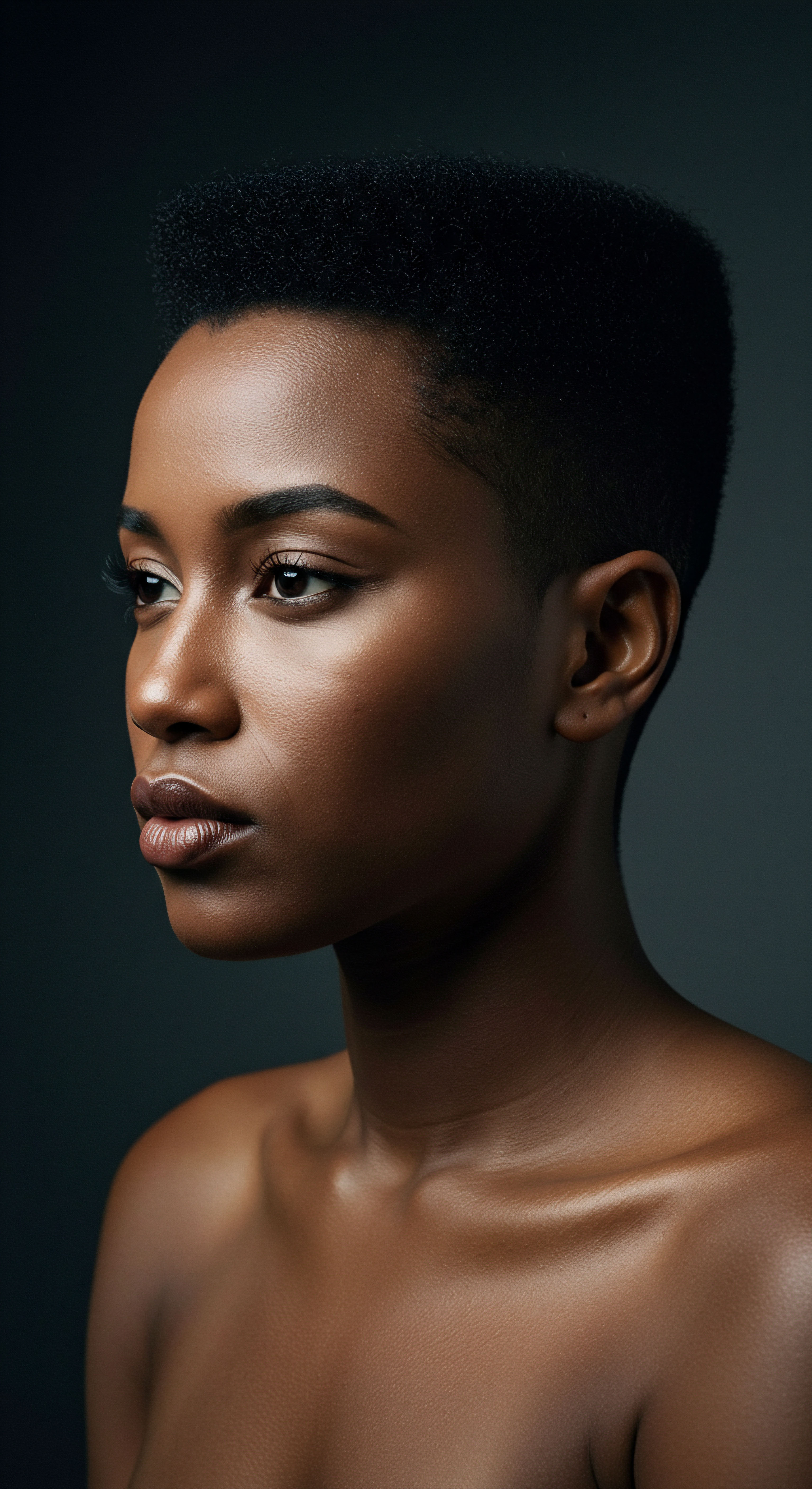
References
- Oforiwa, A. (2023, December 7). The History and Culture of African Natural Hair ❉ From Ancient Times to Modern Trends. AMAKA Studio.
- Nyela, O. (2021). Braided Archives ❉ Black hair as a site of diasporic transindividuation. York University.
- Nojek, P. Zimonczyk, M. & Zawół, M. (2024, November 29). Hair loss therapies ❉ a review and comparison of traditional and modern treatment methods. Municipal Hospital in Siemianowice Slaskie.
- Tharps, L. (2001). Hair Story ❉ Untangling the Roots of Black Hair in America. St. Martin’s Publishing.
- Essel, G. (2022). Microscopic Characteristics Of Scalp Hair Subjected To Cultural Styling Methods In Ghanaian African Females. International Journal of Arts and Social Science.
- Aguh, C. (2025, March 26). Dermatologists Advocating for Inclusive Hair Loss Research and Treatment in the African Diaspora. The American Journal of Managed Care.
- Sieber, R. & Herreman, D. (2000). Hair in African Art and Culture. Museum for African Art.
- Walker, A. (1991). The Black Beauty Myth. The New York Times Magazine.
- Byrdie. (2025, April 11). 33 Cool Protective Styles for Black Hair—From Knotless Braids to Faux Locs.
- Women’s Health. (2024, September 23). What Is Hair Oiling? A Look Into The Ancient Haircare Practice.
- Times of India. (2024, October 4). 5 traditional Indian hair oils for hair growth.
- Glamour Garden. (2023, December 11). Traditional Indigenous Haircare ❉ Ancient Wisdom for Modern Hair Concerns.